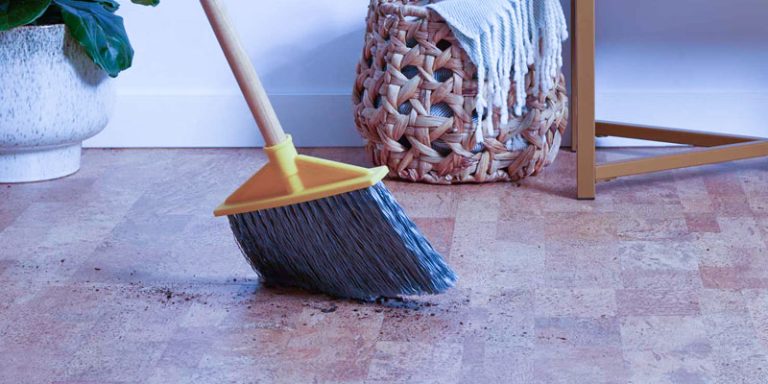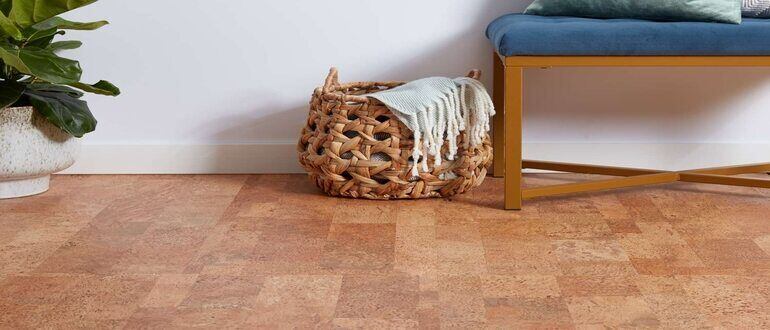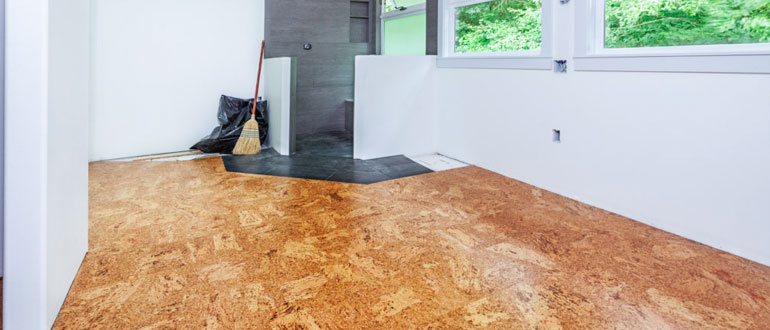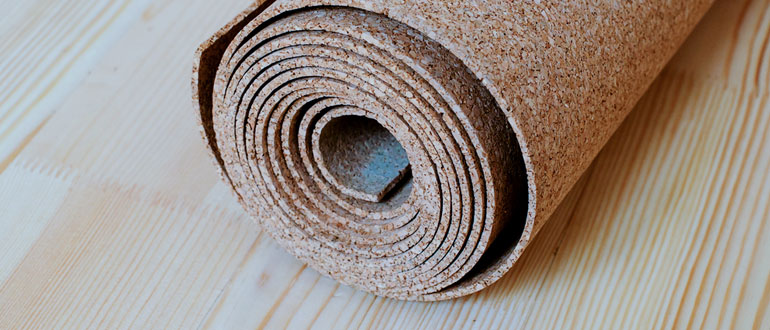Cork flooring is a popular choice for modern homes due to its durability, eco-friendliness, and comfort. However, like any other flooring, cork floors require regular cleaning and maintenance to keep them looking their best. Maintaining cork flooring is easy, but it is essential to understand the unique characteristics to clean cork floors and take care of them properly.
This article will provide tips and tricks for keeping cork floors clean and looking new. From daily cleaning to deep cleaning, we’ll cover everything you need to know to ensure your cork floors are always in tip-top shape.
This article will highlight the best cleaning methods and products for cork floors. It will also give insight into the unique qualities of cork flooring and how to address any potential downsides. It will also discuss how to maintain the shine and finish of cork floors. With the information provided in this article, you’ll be able to keep your cork floors looking beautiful for years to come.
Understanding Cork Flooring:
Cork flooring is made from the bark of the cork oak tree, which is harvested every 9 to 12 years without harming the tree. Cork is a natural, sustainable, and renewable resource. It is also naturally resistant to mold, mildew, and pests, making it a popular choice for kitchens and bathrooms.
Cork flooring is also relatively soft and warm underfoot, which can be a welcome change from more complex materials like tile or hardwood. However, cork is more soothing than hardwood or tile so it could be better for homes with pets or heavy foot traffic. Additionally, the pin is not as resistant to water as other flooring options, so it can be prone to swelling and staining if exposed to water for an extended period.
To prevent this, clean up spills promptly and ensure that the cork flooring is appropriately sealed. By understanding the unique characteristics of cork flooring, homeowners can better care for and maintain their floors to ensure they last for many years.
Daily Cleaning and Maintenance:
Daily maintenance is crucial for keeping neat and clean cork floors looking their best. The basic steps for daily cleaning of cork flooring include sweeping, dusting, and vacuuming. Use a soft-bristle broom or a dry mop to sweep the floor regularly, to remove any dirt or debris. Dusting will help remove any fine particles not caught by the broom. Then, use a vacuum with a slippery floor setting to pick up any remaining dirt.
It is essential to use mild detergent for cleaning cork floors. Avoid using abrasive products, as they can scratch the cork’s surface. Instead, you can use a mixture of water and a small amount of mild dish soap. You can also use specialized cork floor cleaners. To remove stains, use a small amount of baking soda and water or white vinegar and water.
To maintain the shine and finish of cork floors, it is essential to use a high-quality wax or sealant. This will help protect the floor from scratches and stains and make cleaning easier. Be sure to reapply the wax or sealant every few months, according to the manufacturer’s instructions.
Additionally, you can use a microfiber mop or cloth to buff the floor, which will help keep it looking shiny. By taking these simple steps to clean and maintain cork floors regularly, you can keep them looking new for many years.
Deep Cleaning:

It is essential in maintaining cork flooring, but it should be done only sometimes as it can cause damage to the cork surface. Deep cleaning should be done when there is a buildup of dirt and grime or when the cork appears dull or discolored. The frequency of deep cleaning depends on the traffic and usage of the floor, but generally, it should be done at least once a year.
When deep cleaning, it is essential to use a specialized cork floor cleaner or a mixture of water and vinegar. This will help to remove dirt and grime without damaging the cork surface. It’s important to avoid using harsh chemicals or abrasive products, as they can cause discoloration or damage to the cork.
Removing tough stains or discoloration from cork flooring can be challenging. However, mixing baking soda and water can remove light stains. Try using a commercial cleaner formulated explicitly for cork floors for rigid or dark colors. Some discoloration can be caused by sunlight. In that case, consider a UV-blocking window film or rearrange the furniture.
It’s also important to be cautious when using any cleaning product, and always try it on a small inconspicuous area before using it on the entire floor. With these tips and techniques, your cork flooring will maintain its beauty and be protected against dirt and stains.
What is the downside to cork flooring?
Before choosing cork flooring, you must consider your specific needs and the environment in which it will be installed. If you’re willing to put in the extra effort to maintain it, cork flooring can be an excellent choice for a warm and comfortable floor.
Cork flooring is a popular flooring option for its durability, comfort, and eco-friendliness, but it also has some downsides to consider:
- Softness: Cork flooring is relatively soft compared to other types of flooring, and it can dent or scratch easily. It may not be suitable for high-traffic areas or homes with pets.
- Maintenance: Cork flooring needs to be sealed periodically to maintain its durability and water resistance. Cork flooring can absorb water and expand or buckle if not properly maintained.
- Expansion and contraction: Cork flooring is naturally porous and can expand or contract with changes in temperature and humidity. This can cause gaps between the planks or tiles, which can be challenging to fix.
- Cost: Cork flooring can be more expensive than other types of flooring, especially if you’re looking for a high-quality, premium product.
- Limited color options: Cork flooring is typically available in lighter shades, and it may be challenging to find darker colors or designs that match your decor.
The Most Common FAQs
Q: How is cork flooring different from other types of flooring?
A: Cork flooring has unique characteristics, such as its natural resistance to mold, mildew, and pests, which make it different from other types of flooring. Cork flooring is also relatively soft and warm underfoot, which can be a welcome change from more complex materials like tile or hardwood.
Q: How often should I clean my cork floors?
A: You should sweep, dust, or vacuum your cork floors regularly. Additionally, deep cleaning should be done at least once a year or more often if there is heavy traffic or dirt buildup.
Q: What type of cleaning products should I use on my cork floors?
A: Avoid using a mild detergent and avoid abrasive products, as they can scratch the cork surface. You can use a mixture of water and a small amount of mild dish soap. Specialized cork floor cleaners are also available.
Q: How can I remove stains from my cork floors?
A: You can remove stains from cork floors by mixing baking soda and water or white vinegar and water. Try using a commercial cleaner formulated explicitly for cork floors for rigid or dark colors.
Q: How do I maintain the shine and finish of my cork floors?
A: You can maintain the shine and finish of cork floors using a high-quality wax or sealant. This will help protect the floor from scratches and stains and make cleaning easier. Be sure to reapply the wax or sealant every few months, according to the manufacturer’s instructions. Additionally, you can use a microfiber mop or cloth to buff the floor, which will help keep it looking shiny.
Q: Can I use a steam mop on my cork floors?
A: Using a steam mop on cork floors is not recommended, as the heat and moisture can cause damage to the cork surface.
Q: Can cork floors be refinished?
A: Cork flooring can be lightly sanded and resealed, but it cannot be refinished like hardwood floors.
Q: How can I prevent discoloration of my cork floors?
A: Discoloration can be caused by exposure to sunlight. To prevent this, it is essential to clean up spills promptly, use a UV-blocking window film, rearrange furniture, and ensure that the cork flooring is appropriately sealed.
Q: Can cork flooring be used in areas with heavy foot traffic?
A: Cork is softer than hardwood or tile, so it is not ideal for homes with pets or heavy foot traffic.
Note that this is a general guide, and it’s important to always refer to the manufacturer’s instructions and recommendations to ensure you take proper care of your cork flooring.
Conclusion
In conclusion, cleaning and maintaining cork flooring is an essential aspect of home ownership. Understanding the unique characteristics of cork. Furthermore, using the proper cleaning methods and products is critical to keeping cork floors looking new.
Regular daily cleaning and maintenance, as well as occasional deep cleaning, are necessary to ensure the longevity of cork flooring. It is important to note that clean cork floors can be sensitive to certain types of cleaning methods and products. So always test it on a small inconspicuous area before applying it to the entire floor. If you are having trouble with certain stains or dirt, you should contact professionals for help.
With the information provided in this article and the comprehensive guide. You’ll be able to keep your cork floors looking beautiful for years to come. We encourage you to share this article with your friends and family on social media.



